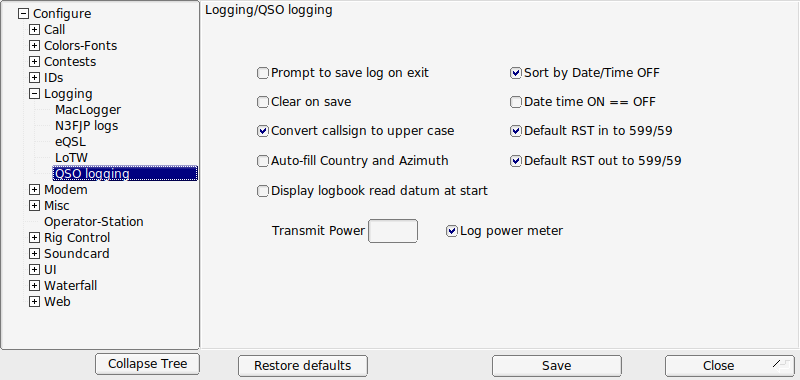
each sub-block separated by 2 empty lines.

#FLDIGI LOGGING CODE#
( cut needs stdbuf -oL note that 18 ist the length for RTTY, NavTeX would be 17)īecause RTTY code represent letters and numbers with shift code, it might To see a running log make sure to set all tools to line buffering: tail -f fldigi20200326.log | grep -line-buffered -v RYRY | grep -line-buffered -v "CQ CQ " | grep -line-buffered -v "FREQUEN" | grep -line-buffered -v ": $" | stdbuf -oL cut -c18. The technical messages ( CQ, RY and frequency announcements).

This will strip RX line numbers and protocol and drop out empty lines as well To extract a more compact report from these logs cat fldigi20200326.log | grep -v RYRY | grep -v "CQ CQ " | grep -v "FREQUEN" | grep -v ": $" | cut -c 18. This will create a text file $HOME/.fldigi/fldigi.log To create a text mode log file use File/Text capture and set Log all RX/TX text. Unset: CR-CR-LF, TX-unshift on space, Pseudo-FSK - right channel.SSB: LSB (also check USB + Rv in fldigi).Mentiond (usually requires some additional hardware to access the low HFįrequencies).
#FLDIGI LOGGING SOFTWARE#
Soundcard or a software defined radio that is capable to receive the frequencies

This can be a classical world receiver hooked up to the PC's These weather reports can be recieved by any HF radio that features single sideīand reception. Weather reports are transmitted in HF frequencies as follows: Frequency DWD Weather reports via RTTY RTTY Text reports


 0 kommentar(er)
0 kommentar(er)
